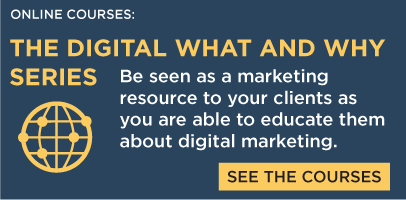 Media sellers today have more capabilities than ever to drive results for their clients. With all of the potential options, you would think that it has gotten easier to build a solution that will drive results, right? Nothing could be further from the truth! If anything, the sheer number of solutions has made it more challenging to determine when to use what when. And with all of those capabilities, their presentations have also become longer – many filled with a multitude of product one-sheets and then a laundry list of recommended products in the recommended solution.
Media sellers today have more capabilities than ever to drive results for their clients. With all of the potential options, you would think that it has gotten easier to build a solution that will drive results, right? Nothing could be further from the truth! If anything, the sheer number of solutions has made it more challenging to determine when to use what when. And with all of those capabilities, their presentations have also become longer – many filled with a multitude of product one-sheets and then a laundry list of recommended products in the recommended solution.
That is a struggle that I hear from salespeople that I work with all over the country. It’s not just determining what should be in the solution, but how to present it in a truly integrated format where it is clear why all of the components are critical to a successful result.
Shift the Conversation to the Consumer Journey
Enter the Consumer Journey.
The consumer journey involves all the moments leading up to and following a purchase of a product or service. In today’s environment of a non-linear path-to-purchase, it makes no sense to present solutions in silos of traditional media and digital media capabilities, and the consumer journey provides the perfect resolution.
Media salespeople today must incorporate the consumer journey into their conversation with prospects and clients. They need to shift the conversation to understand how they are currently attracting consumers, engaging with them, converting them to customers, and the type of experiences they provide to create advocates of their business.
Once they understand how that consumer travels along their journey, now you can start to consider how the products you sell can impact those consumers along their journey.
Solutions that Tell Stories
Instead of listing a menu of products, focus your solution on telling a story.
Show them how you will use your capabilities to attract their target consumers, drive engagement with those consumers to convert them into fans that will advocate for their business, ultimately impacting a new consumer on their journey.
Tell the story of a “day in the life” of their target consumer… here is an example:
Sally wakes up, and before she gets out of bed, she grabs her smartphone and checks her social media. She then gets up and turns on the television while she is getting ready for work. In the car, she listens to a local radio station for traffic reports. She gets to work, turns on her computer, and throughout the day she checks her email, visits the local media site to see what is happening this weekend… you get the picture, right?
In this story, you could easily see where social media ads, TV, Radio, display ads, and email, might all fit to impact that consumer along her journey. It makes it easy to understand why we are pulling these capabilities into the solution.
Now it’s all up to the creative!



